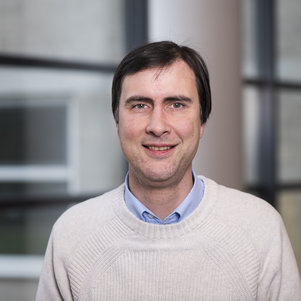Safety & security in the chemical- and hazardous materials transport sectors
There has been a great call for optimal safety and security in many business sectors, particularly since 9/11. TU Delft's Safety and Security Science Research Group focuses its research on a number of disciplines including safety & security in the chemical industry and all associated socio-economic optimisations.
It goes without saying that safety is a top priority in the chemical sector: after all, corporate social responsibility is impossible without safety! “Safety is linked to a range of issues including technology, management and procedures, human behaviour, training and all related domains, and this is also the case in chemical companies,” explains Prof. Genserik Reniers, Professor of Safety of Hazardous Materials at TU Delft: “Just consider legal aspects, risk management, risk modelling, risk assessment, risk communication, business continuity planning, safety performance management, economic aspects of safety, reliability engineering, learning from accidents, etc. In other words, safety indeed is a very important and interesting domain within a chemical company!”
Security of chemical companies against intentional criminal acts (such as theft and terrorism) is also a crucial research theme. “A cautious conclusion from previous research is that security and the security culture can often be improved upon”, says Reniers. “This is based on the fatalistic idea that a terrorist attack simply cannot be prevented. However, the opposite is true: the better a company's security against deliberate acts to harm the company, the smaller the likelihood of an attack.”
Domino danger hubs
One interesting possibility for improving security is the prevention of domino effects in chemical industrial areas. This refers to systemic risks, where one accident triggers the next one. Reniers: “Chemical industrial parks can have domino danger hubs: installations that play a major role in the initialisation or continuation of domino effects. By protecting these hubs against intentional acts, the hazard network can be broken down into various ‘domino islands’. This can make a chemical production area far better equipped to withstand terrorist attacks. We are developing mathematical models for this purpose.”
Hazardous goods transport
According to Reniers, the international transport of hazardous goods (by rail, road, pipeline and inland shipping) is also an interesting area of research. After all, such hazardous loads can be used as a weapon or cause a disaster themselves. Therefore, safety and security are crucial. “Legislation for the various modes of transport already exists at the European level, but each country has its own approach to questions such as 'how will we analyse risks, how high are the risks, and which measures will we take?' Ideally, risk assessment concerning the transport of hazardous goods should be harmonised at the European level. This makes it possible to map out optimal routes through Europe from A to B, taking into account safety and security aspects, as well as environmental and economic factors and legislation. Our work in this area includes the design of multi-criteria models. We also apply game theory as a mathematical technique.”
Clustered safety and domino effects
The chemical sector has numerous chemical industrial clusters, with the companies in the different clusters forming a potential danger to one another. After all, accidents are not always confined to company boundaries. In terms of safety, however, companies often only work together at the operational level, and mainly on a reactive basis. For example, information about accidents is sometimes shared. TU Delft would like to see more cooperation: “We want to show companies in the industry that cooperating strategically, sharing information and managing prevention funds together can give them a competitive advantage. They can invest together in prevention, with an independent, coordinating advisory body optimally distributing the investment over the cluster on the basis of a mathematical model.”
Safety economics
Another fascinating area of research is safety economics. This concerns the revenues and expenses connected to accidents that have been prevented by taking safety precautions. The research question here is: how do organisations decide to take certain preventive measures? Refined mathematical methods are needed to properly weigh the costs and benefits. Which accident scenarios will you include/exclude? And what consequences will you be avoiding? At the same time, the license to operate plays a major role in investment decisions: because companies really do not want to suffer a major accident, significant costs are justified. However, economic activities must continue, so the costs cannot be infinitely high. We are therefore working on optimising the mathematical method for investment decisions relating to the prevention of major accidents.”
TPM as a home base
The TPM faculty is an excellent home base for safety and security research. That is because the research is an essential part of all academic disciplines, including typical TPM subjects such as technology, economy, management and philosophy. Reniers: “The importance of safety considerations in economics and management sciences can hardly be overestimated. Many different safety aspects should also be considered when designing technological solutions. After all, safety is one of the most important factors supporting, connecting and coordinating ethics within decisions.”
Head of TLO group
| Read more |

